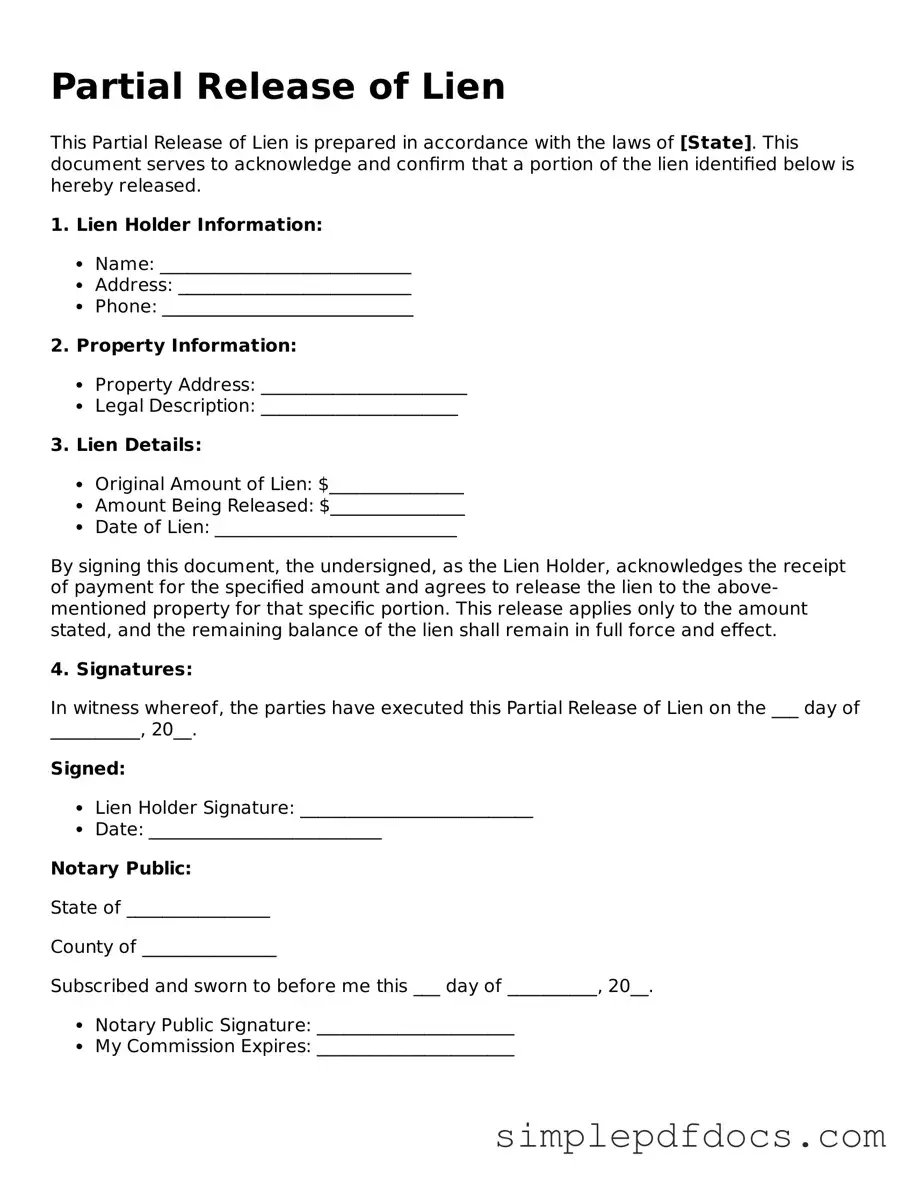Attorney-Approved Partial Release of Lien Form
The Partial Release of Lien form is a legal document that allows a property owner to release a portion of a lien on their property. This form is often used in construction projects when a contractor or subcontractor has been paid for specific work, thereby removing the lien's claim on that portion of the property. Understanding this form is essential for both property owners and contractors to ensure clear and fair transactions.
Get Document Here
